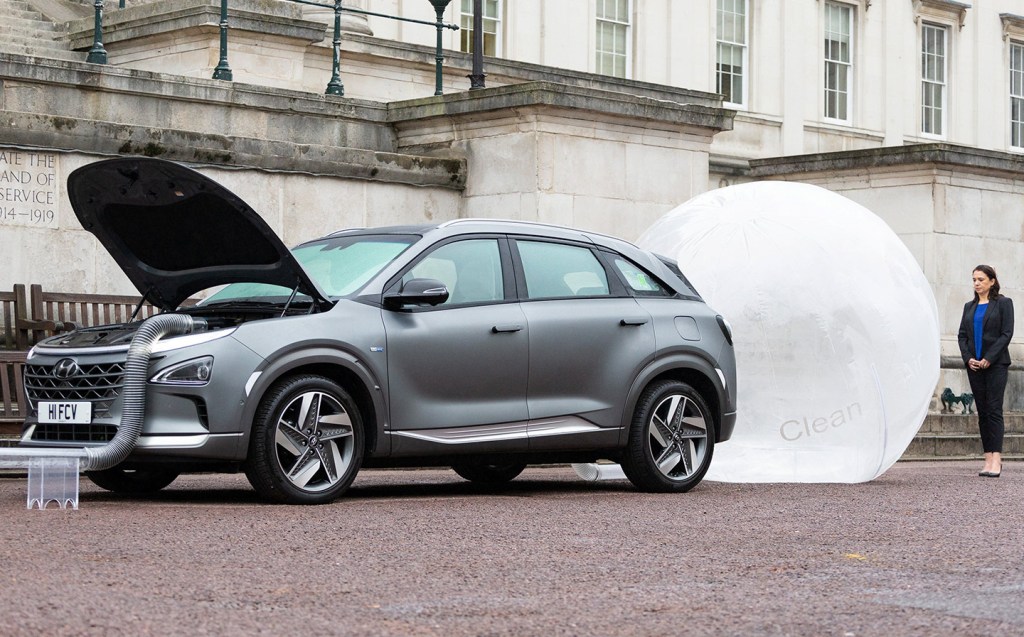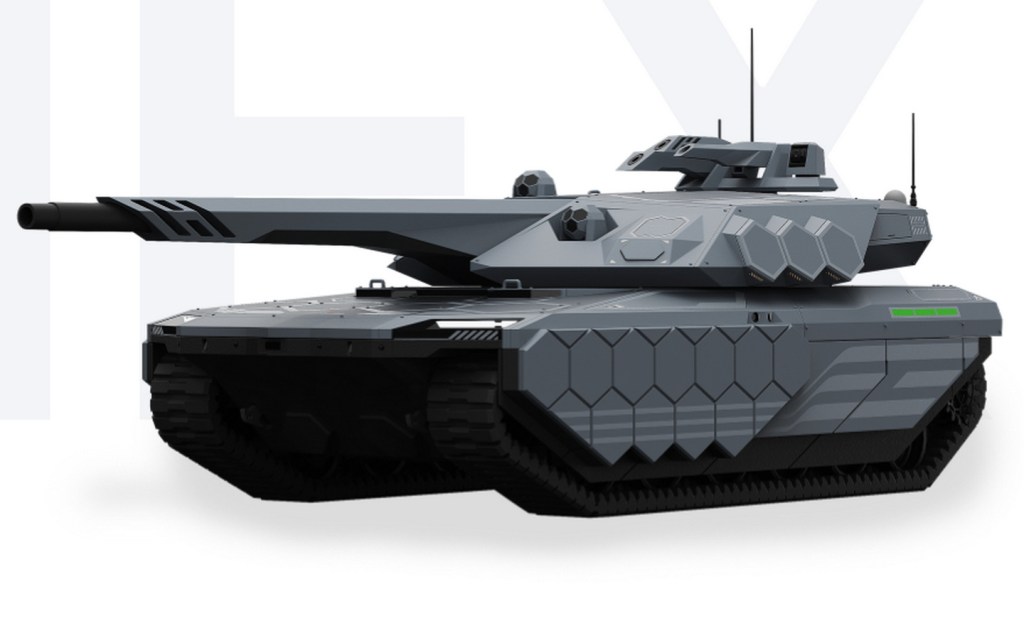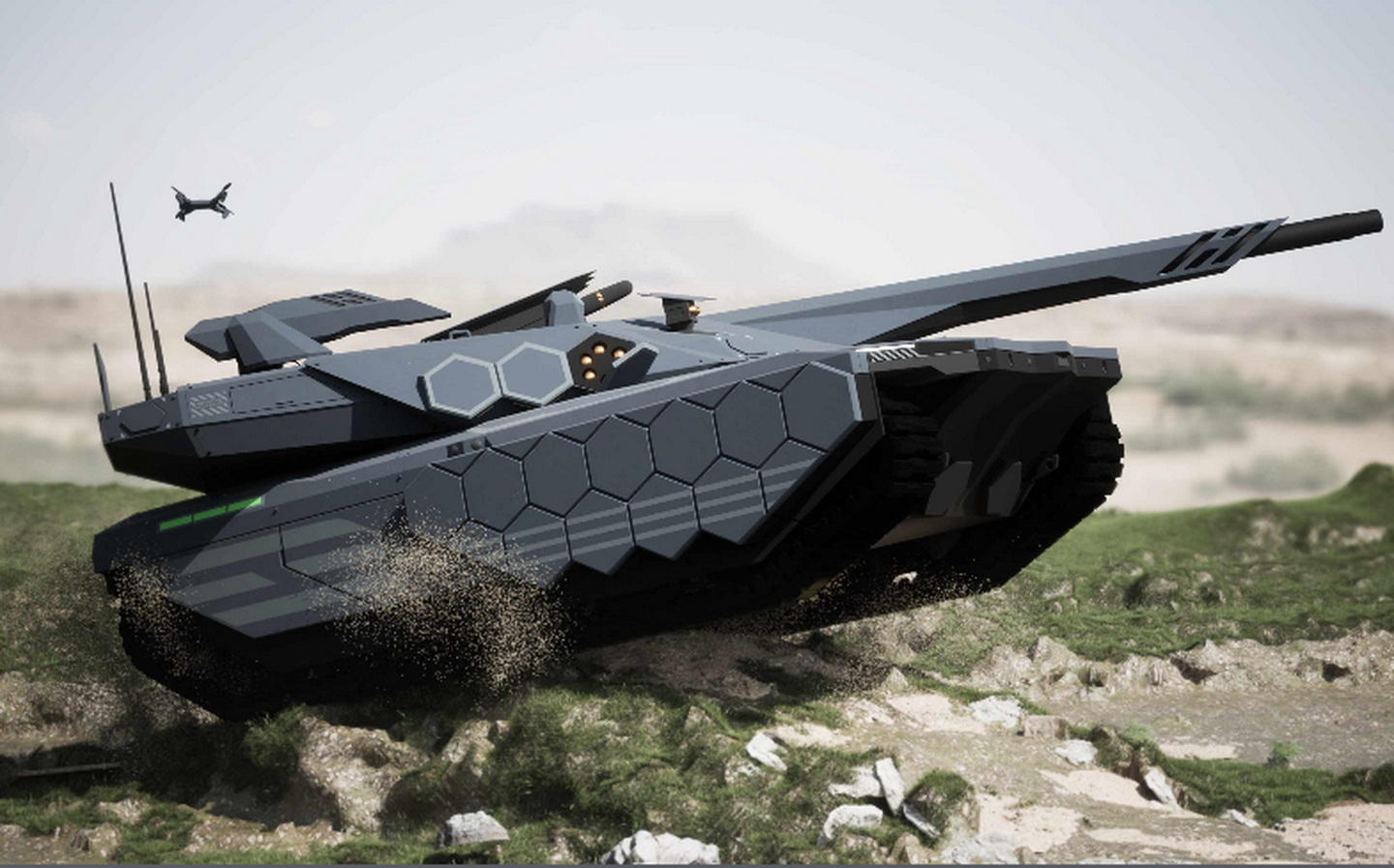Hyundai reveals world’s first hydrogen-powered battle tank
Fuel cell tech shared with the automotive industry
Hyundai has revealed its plans for a next-generation battle tank that’s powered by hydrogen fuel cell technology developed for use in some of its road cars.
South Korea’s next K-Series battle tank, the K3, has been developed by Hyundai subsidiary Rotem and will use hydrogen fuel cells to produce clean, almost silent propulsion.
By combining hydrogen from compressed gas tanks with oxygen from the air, a hydrogen fuel cell can create electricity that is then stored in a battery and used to power an electric motor, creating a near-silent powertrain with a theoretically greater range than a pure battery-electric vehicle. The sole emission is water, usually in vapour form.
Hydrogen already in Hyundai cars
Hyundai has already used hydrogen fuel cell power in passenger cars, having launched the ix35 FCEV back in 2015, and followed it with the Nexo last year. Although neither vehicle has sold in large numbers, they are among the world’s first commercially available hydrogen fuel cell vehicles.

But the K3 is expected to be the first tank to use the technology, which provides various tactical advantages. Quite apart from reducing emissions and noise, the system also reduces the tank’s heat signature and is expected to improve reliability thanks to the reduction in moving parts.
Hybrid power for tanks
Initially, Hyundai Rotem says the first K3 tanks will have “hybrid” powertrains that combine hydrogen and conventional diesel technology, but the diesel aspect will be phased out over time.
The first examples of the K3, developed with the South Korean military, are expected to enter production in 2040.
“Next-generation main battle tank (MBT) surpasses all capabilities of today’s MBTs, providing more efficient mission employment with the latest technologies for future warfare,” said Hyundai Rotem in a statement.
“As battlefield conditions change, more changes are required to MBT’s firepower, command and control, and survivability to be more optimized and to create maximum combat synergy.”
K3 tank is high-tech in other ways, too

As a fighting vehicle, the K3 has more than just a snazzy powertrain in its armoury. The new K3 will also have better stealth capabilities, autonomous driving technology and an observation drone, as well as a new 130mm smoothbore main gun.
Hyundai Rotem is also said to be developing a “stealth” body design for the already futuristic-looking tank, which will offer its crew “state-of-the-art multi-layer protection.”
According to Army Recognition, the K3 will have a crew of three, with the driver joined by a commander and a gunner in a heavily armoured section of the vehicle’s hull.
While Rotem is pushing ahead with the K3, some people also see hydrogen as an ideal fuel for future civilian vehicles — especially larger ones — because the fuelling process is little different to filling a petrol or diesel vehicle and takes a similar amount of time.
However, detractors say the process required for extracting hydrogen, which is normally bonded to other elements, is inefficient and battery-electric cars offer better “well-to-wheel” efficiency.
Despite this, several manufacturers are experimenting with the technology, including Toyota and BMW, which says fuel cells could be used in large cars, trucks and in regions where the electrical supply is not suitable for battery-electric vehicles.
And Hyundai Rotem, described by its parent company as a “heavy industry” business, has found other applications for the fuel cell, including hydrogen-powered trams.
Related articles
- If you found news on Hyundai’s new hydrogen-fuelled tank interesting, you might like to watch Hyundai’s high-performance Ioniq 5 N electric car in action on ice
- Also check out our review of the Hyundai Ioniq 5
- Or see how Hyundai hopes to eliminate parallel-parking worries…
Latest articles
- Seven great automotive events to visit this summer, from F1 to art and champagne
- Watch new Porsche 911 GT3 smash Nürburgring record for manual cars
- Skoda Elroq 2025 review: Czech carmaker can’t seem to miss with its electric family cars
- Five best electric cars to buy in 2025
- Should I buy a diesel car in 2025?
- F1 2025 calendar and race reports: The new Formula One season as it happens
- Zeekr 7X AWD 2025 review: A fast, spacious and high tech premium SUV — but someone call the chassis chief
- Denza Z9GT 2025 review: Flawed but sleek 1,062bhp shooting brake from BYD’s luxury arm
- Extended test: 2024 Renault Scenic E-Tech review














